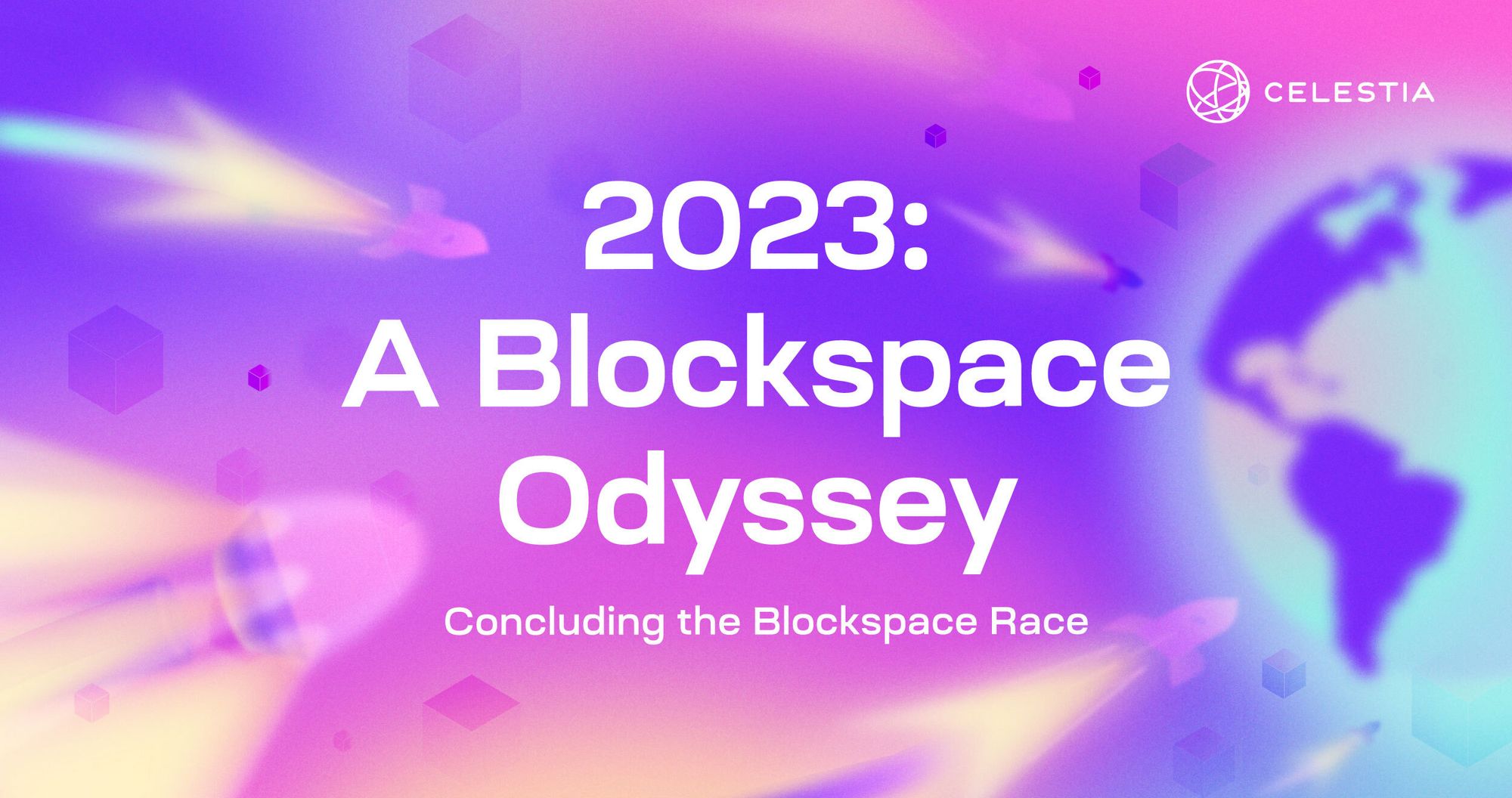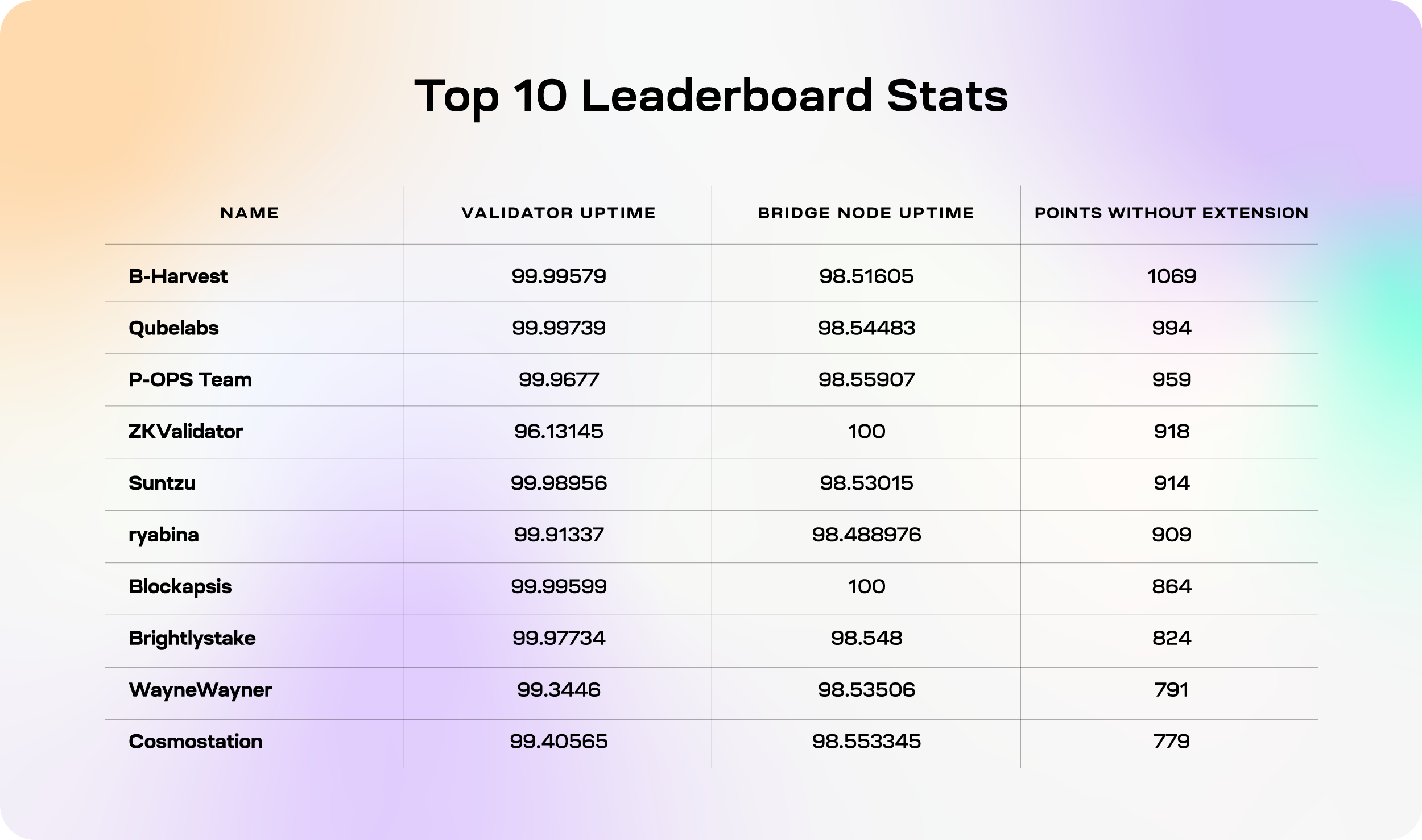2023: A Blockspace Odyssey
Concluding the Blockspace Race

We are thrilled to announce the conclusion of the Blockspace Race, Celestia's incentivized testnet program. With one thousand participants, the Blockspace Race was the largest incentivized testnet ever by participant count of any layer 1 project. This program, launched in March 2023, saw over 700 active sampling light nodes, making significant progress in supporting data availability sampling.
From the launch of the Celestia community’s inaugural testnets, including Mamaki, the first to support data availability sampling, the Blockspace Race was a leap forward. It allowed the community to stress test a more refined version of the protocol. Participants from all corners of the globe embarked on this journey on March 7, competing by completing tasks, trying to score as many points as they can.
Inspired by the original space race, a technological marvel that galvanized global unity towards a shared objective, the Blockspace Race was not just a competition, but an odyssey towards a collective goal - providing abundant blockspace.
As the community crossed the finish line on May 15th, below are reflections on the massive strides taken, the challenges overcome, and the exciting future of blockchain technology being unlocked. Let's celebrate the victors and the remarkable progress made by the community in this extraordinary race.
Stats
Leaderboard Stats
The top 75 winners of the Blockspace Race have been determined! These 75 participants will help kickstart Mainnet later this year by being part of the genesis file, and the validator community is expected to further develop from there.
In this spreadsheet here, you can see the winners’ validator names and validator addresses. As for the high performers, here are the top 10 participants in the blockspace race

Participant Stats

Network Stats

Efforts and Contributions
Engineering
At the heart of Celestia's triumph in the Blockspace Race is the engineering prowess of its community.
The celestia-app core developer team has been a driving force in achieving key milestones. They have successfully implemented a new hardfork orchestration mechanism through the use of single-binary user-activated hardforks. This facilitates network upgrades akin to the Ethereum approach, where validators upgrade their software before a hardfork, which is in stark contrast to the former mechanism in Cosmos where binaries were switched based on block activation numbers. This milestone would not have been possible without the coordination and support of Celestia users who helped orchestrate the hardfork to test the new mechanism. Additionally, the community of validators achieved a milestone by activating the Quantum Gravity Bridge, an essential component that empowers developers to deploy Celestiums.
Simultaneously, testnet participants dedicated themselves to ensuring the data availability layer is robust. Working alongside the celestia-node core developer team, the community has been painstakingly testing the new blocksync/sharesync protocol in the Blockspace Race network. This rigorous approach enabled the discovery of numerous critical bugs contributed to the network’s performance.
The community has also been instrumental in deploying over 800 rollups on Celestia’s Blockspace Race network, which was a major milestone on the testnet. This allowed the community to test Celestia’s resilience as a DA layer supporting numerous rollups. The community used Rollkit, the rollup SDK framework, to achieve this milestone.
In the background, other engineering teams that have been the backbone of the Blockspace Race accomplished major key improvements like improving Testground which enabled the simulation of thousands of nodes in ephemeral testnets, as well as creating chain monitoring and node performance tools and script, making the Blockspace Race a smooth experience from a devops perspective.
Community Teams
Several community teams have also been working behind the scenes, devoting time and resources to make the Blockspace Race program successful. Community members who were also running validators helped in contributing to the design of the program, providing invaluable input and supporting debugging of issues with participants on Discord, as well as helping manage community calls and fielding important questions.
Other community teams helped kickstart integrations like Keplr, Tiascan (a joint effort between Staking Facilities and Celestia Labs), and Mintscan.
Spotlight on Top Participant Contributions
During the Blockspace Race, the community was very active in working on tasks that would provide great benefits to the Celestia ecosystem with several participants going above and beyond in their contributions. Here, we take a moment to highlight them.
B-Harvest took a leap into enhanced transparency by creating a rollup explorer. The explorer is an essential tool, empowering the community to access real-time information about the rollups that were deployed on the network, as well as helping community participants monitor rollups being deployed. B-Harvest also contributed a goldmine of research and tools for the Celestia network.
Brightlystake addressed a need for node participants by building the Celestia RPC tool monitor. It's a valuable resource for node participants enabling them to effortlessly check the status of community-provided endpoints.
Qubelabs wrote a tutorial on successfully orchestrating an IBC transfer between Celestia’s Blockspace Race network and DymensionHub. It’s the first IBC transfer facilitated on Celestia’s Blockspace Race!
Then, there's Wayne Wayner, who helped contribute to kickstarting the Light Node Challenge. He created a tutorial that goes over the process of running a Celestia light node on a Kindle! That took everyone by surprise as we never imagined a Celestia light node would be running on a tablet e-reader anytime soon.
ZKValidator has been a twin-force to reckon with, contributing the Ignite Manager, which streamlines the deployment of rollups with Rollkit, and going on to build Fabchain, a rollup that can operate on a 3D Printer! Discover the contributions by ZKValidator right here.
KingSuper has contributed a very comprehensive analysis of Celestia’s node performance. Using Python notebooks and log monitoring, KingSuper generated charts provided a lot of insights to our team. Read the analysis here.
Road to Mainnet
The Blockspace Race was a huge success, and we are grateful to all of the participants and community-members who made it happen.
Stay tuned for our upcoming Mainnet launch, expected later this year.
